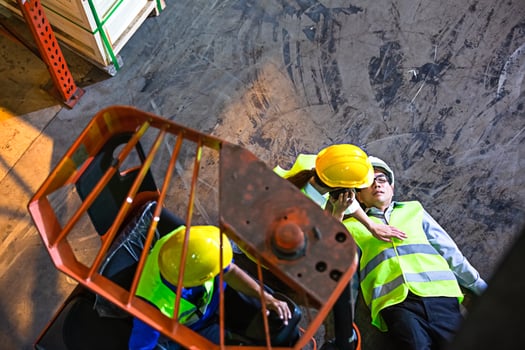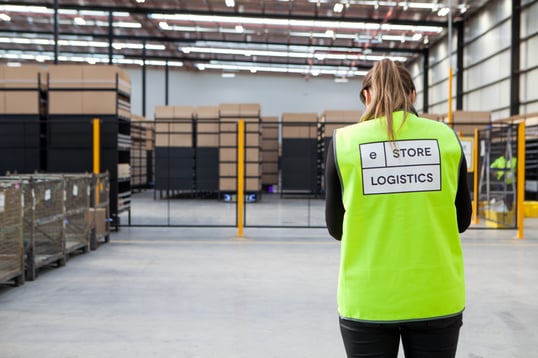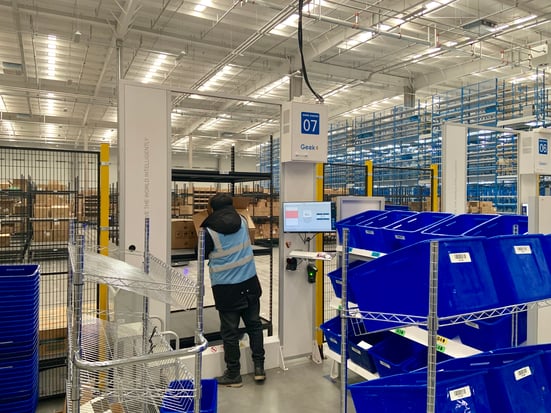An Automated Warehouse Is A Safe Warehouse
Loaded with heavy machinery and cargo, warehouses can potentially be hazardous environments to work in. In fact, warehouse accidents and fatalities are more pervasive than expected. According to reports from the US Bureau of Labour Statistics, the US warehousing and storage sector experiences nearly 15,000 injuries and illness and an average of 16 fatalities each year. These mishaps translates to a huge cost for employers – serious, non-fatal injuries cost $84 million a week in the warehousing industry. As such, it is undeniable that warehouse safety is still compromised and that there is a need to fortify safety procedures in warehouses.
Prime culprits for injuries
There are a myriad of causes that warehouse accidents can be attributed to and the unsafe usage of forklifts is the one of the most cited hazard in warehousing operations by the Occupational Safety and Health Administration (OSHA). Forklifts are ubiquitous in warehouses. However, when operated incorrectly, they can result in serious damage to its user, nearby workers and even property due to the sheer size of the vehicle and the proximity it operates to workers on foot. Moreover, since drivers often become comfortable using forklifts, it can lead to negligence. Forklift accidents can be extremely perilous since 36% of nearly 100,000 forklift accidents in 2015 culminated in either critical injuries or death.

This is closely associated with another common cause i.e. loading docks, the area of a building where goods are loaded and unloaded from vehicles. Docks can make for near war zones for warehouse operators as the equipment operated here, such as forklifts, move extremely quickly and there is usually a lack of safety netting to safeguard trips and falls. As such, there are many instances when workers have been pinned or crushed between a forklift truck and a loading dock. The OSHA reports that 25% of all industrial accidents occur at loading docks.
Improper manual lifting and handling, including order picking and pallet handling, in warehouses engenders ergonomic risks and thereby, a bulk of warehouse accidents. Failure to follow proper procedures can cause musculoskeletal disorders and this risk is elevated by heavy loads, awkward positions, repetitive motions and overexertion. It is estimated that back and shoulder pain makes up approximately 40 to 50 per cent of all claims filed by warehouse workers.

Inappropriate material storage can also result in unintended slip and trip hazards for warehouse employees. For instance, when loads are positioned unevenly, they may fall over and potentially injure a nearby worker. The risk of falling objects is further amplified when the cargo is stored in higher racks and platforms.
Invest in safety to secure productivity
Due to insufficient time, inadequate resources, carelessness or even an opportunity to cut corners and reduce costs, warehouse safety is often overlooked and disregarded. Moreover, as the warehousing industry experience major labour shortages, warehouses employees are often overworked and fatigued. Not only would this directly expose warehouse workers to serious risks of injury and even fatalities, it can have adverse effects on employee satisfaction and morale as well. Long term productivity levels and smooth operations may also be disrupted when accidents occur and absenteeism associated with injury increases. Overall, additional expenses may be incurred by the employer to cover employee’s medical bills, hire temporary manpower or even to repair damaged equipment and property. As such, prioritizing warehouse safety is thus absolutely necessary to maintain a safe, healthy and productive working environment.

(Geek+ robots operating inside the barrier to ensure warehouse safety)
Role of automation in maintaining warehouse safety
Warehouse managers can protect the safety of their employees through preventive measures such as proper ergonomics training and adherence to health and safety regulations outlined by authorities like OSHA. However, education and regulatory compliance can only reduce risks to a certain extent. Warehouses should endeavour to thoroughly eliminate unwarranted threats and the solution to achieving this is simple - automation.
An automated warehouse can operate efficiently with minimal manual labour. For example, an automated picking robot can assist in order picking and pallet handling, thereby obliterating the risks from manual lifting and handling which warehouse employees were previously exposed to. Instead of being involved in precarious and laborious work, warehouse employees can now work in a more secure environment and focus their effort in strategizing warehouse operations to maximize overall productivity.

(Warehouse employee picks the ordered items outside the robot area)
Geek+ offers a series of automated, unmanned solutions, such as picking, moving and sorting robots, which are highly flexible and can be deployed rapidly according to the needs of each unique warehouse. Alongside these solutions is Geek+’s very own smart forklift, which is fully automated and thus, able to navigate safely and independently without human intervention. Undoubtedly, this would be exceedingly beneficial in creating a safe working space for all warehouse employees whilst ensuring that operational objectives are fulfilled.




